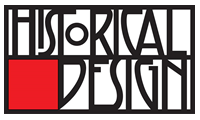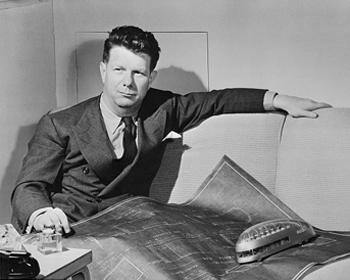Product Description
Norman Bel Geddes Art Deco Streamline Medal 25th anniversary of GM 1933


NORMAN BEL GEDDES (1893 – 1958) USA
Medal 1933 (Commemorating the twenty-fifth anniversary of General Motors)
Silvered bronze
Signed: Norman Bel Geddes [copyright mark ] 1933
Exhibited: The Metropolitan Museum of Art, New York, May 16-Jan. 7, 2001, Mint Museum of Craft & Design, North Carolina, May 3-July 28, 2002
Illustrated: Johnson, J. Stewart, American Modern 1925-1940: Design for a New Age, Harry N. Abrams & The American Federation of the Arts, 2000, p. 127
Diameter: 3″
This medallion, commemorating the twenty-fifth anniversary of General Motors, is an example of the Streamlined style that dominated architecture and design in America from the late 1920s to the end of the 1930s. With its abstracted, teardrop-shaped vehicle form depicted in motion, with the tall winglike element rising from its center, the overall effect is one of speed and movement—characteristic of the Streamlined style and appropriate to the automobile and airplane age. Norman Bel Geddes was trained as a theatrical set designer but best known for another project for General Motors, the Futurama exhibition at the 1939 New York World’s Fair. This exhibit, through which visitors were propelled on a giant conveyor belt, depicted a utopian vision of America in the near future, a world dependent on the speed and efficiency of the automobile for work and recreation.
Norman Bel Geddes Art Deco Streamline Medal 25th anniversary of GM 1933
DOROTHY RENO GROVER (1908-1975) USA
“California Interior with black cat” c. 1950’s
Oil on Canvas
Canvas: H: 40″ x W: 34 1/2″
Framed: H: 42″ x W: 36 1/2″
Born in Dallas, TX on Sept. 10, 1908 into a pioneer Texas family. (Her grandfather was mayor of Dallas, and Brownsville, Texas is named for him.) Dorothy Reno moved to California with her family at age ten and settled in San Mateo. After graduating from Mills College, she obtained an M.A. degree from UC Berkeley. She wed radio announcer John B. Grover in 1931 and settled in Oakland. In 1971 she bought the former home of artist Glenn Wessels in Berkeley where she remained until her death.
